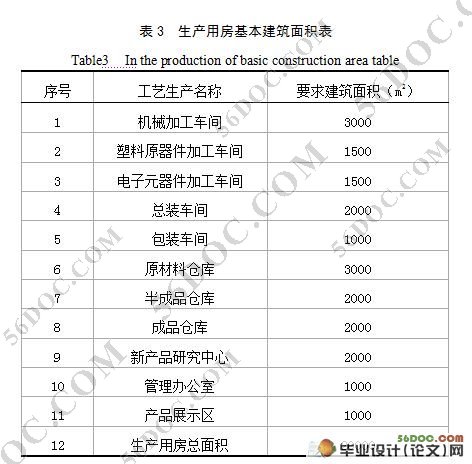某服务处理设备厂建设项目可行性研究
来源:56doc.com 资料编号:5D4440 资料等级:★★★★★ %E8%B5%84%E6%96%99%E7%BC%96%E5%8F%B7%EF%BC%9A5D4440
资料以网页介绍的为准,下载后不会有水印.资料仅供学习参考之用. 密 保 惠 帮助
资料介绍
摘 要:随着科技的进步,对邮政传递的质量和安全要求也越来越高,未来邮政将出现三大结构性的改变趋势。商函服务处理设备厂是邮政企业靠近世界相关企业,同时又是创造效益、了解市场需求的最好手段。此方案将所有设备连成一整体使用,提高效率,满足国际形势对中国邮政机械化、自动化、信息化水平的要求,实现邮政传递质量水平和安全性能的提高。本文对可行性研究进行了理论概述,在总结建设项目可行性研究发展现状及趋势的基础上,对设备厂建设的必要性、目标定位进行了论述,并从市场需求、建设规模、场址选择、人员配置、投资估算以及经济效益等方面对该服务设备厂项目进行了可行性研究。
关键词:工业项目;可行性研究;设备处理
Hunan Division Of The Service Handled By Facilities For Construction Project Feasibility Study
Abstract:With the development of technology, requirements of the postal delivery quality and safety are getting higher and higher.Post will appear the next three major structural changes in the trend. Direct Mail Services Treatment Equipment Factory is the best way to make the postal enterprises get closed to enterprise around the world,create effective and understand the market needs. Meanwhile, it is to create effective, the best means to understand the market demand. This program will make all the equipment entirety to use.It can improve efficiency and meet the international situation, China's postal mechanization, automation, information technology proficiency requirement.It achieves the level of postal delivery of quality and safety improvement.This paper give a theoretical overview of the feasibility study. Summarize the development of feasibility study of project based on the current situation and trends, the article on the need for equipment, plant construction, target location are described. From the market demand, the scale of construction, site selection, staffing, investment and economic benefits in terms of estimated Xiang-ke Direct Mail Services Equipment Factory project conducted a feasibility study.
Keywords :Industrial Projects; Feasibility study; Equipment handling


目 录 18000字
摘 要 ………………………………………………………………………………………… 1
关键词………………………………………………………………………………………… 1
1 前言………………………………………………………………………………………… 2
2 项目概述…………………………………………………………………………………… 4
2.1 项目概况 …………………………………………………………………………… 4
2.2 相关技术指标 ……………………………………………………………………… 5
3 市场预测 ………………………………………………………………………………… 5
3.1 产品市场需求预测 ………………………………………………………………… 5
3.1.1 国外市场需求现状 …………………………………………………………… 5
3.1.2 国内市场需求预测 …………………………………………………………… 5
3.2 产品目标市场分析 ………………………………………………………………… 6
3.3 价格现状与预测 …………………………………………………………………… 7
3.4 市场竞争力分析 …………………………………………………………………… 7
4 设计方案 ………………………………………………………………………………… 8
4.1 建设规模 …………………………………………………………………………… 8
4.2 场址选择 …………………………………………………………………………… 8
4.3 总平面布置 ………………………………………………………………………… 9
4.4 平面布置 ………………………………………………………………………… 10
4.5 方案比选 ………………………………………………………………………… 13
4.6 给、排水 ………………………………………………………………………… 13
4.7 空调及通风 ……………………………………………………………………… 13
4.8 气体灭火 ………………………………………………………………………… 14
4.9 电气工程 ………………………………………………………………………… 14
4.9.1 供电设计 …………………………………………………………………… 14
4.9.2 负荷估算 ………………………………………………………………………14
4.9.3 防雷和接地 ……………………………………………………………………14
4.9.4 照明设计 ………………………………………………………………………14
4.9.5 电气管线敷设 …………………………………………………………………15
4.9.6弱电系统…………………………………………………………………………15
4.10 节能节水措施………………………………………………………………………15
5 投资估算及融资方案 …………………………………………………………………… 15
5.1 投资估算说明 ………………………………………………………………………15
5.2 投资估算 ……………………………………………………………………………15
5.3融资方案 ……………………………………………………………………………21
6 经济评价 ………………………………………………………………………………… 21
6.1 项目财务评价 ………………………………………………………………………21
6.1.1 基础数据与参数选取 …………………………………………………………21
6.1.2 销售收入估算 …………………………………………………………………21
6.1.3 成本费用估算 …………………………………………………………………22
6.1.4 财务评价分析情况 ……………………………………………………………24
6.1.5 财务评价指标 …………………………………………………………………27
6.2敏感性分析 …………………………………………………………………………27
6.3 财务评价结论 ………………………………………………………………………28
6.4 国民经济评价 ………………………………………………………………………28
6.5 环境效益分析 ………………………………………………………………………29
6.5.1 工程的环保设计 ………………………………………………………………29
6.5.2 施工中环保措施 ………………………………………………………………29
7 风险分析 ………………………………………………………………………………… 29
7.1 项目主要风险因素识别 ……………………………………………………………29
7.2防范和降低风险对策 ………………………………………………………………30
8 结论与建议 ……………………………………………………………………………… 30
8.1推荐方案的总体描述 ………………………………………………………………30
8.2 推荐方案的优缺点描述 ……………………………………………………………31
8.2.1 优点……………………………………………………………………………31
8.2.2 存在问题………………………………………………………………………31
8.2.3 研究结论………………………………………………………………………31
8.2.4 建议……………………………………………………………………………31
9 结 论………………………………………………………………………………………31
参考文献 ……………………………………………………………………………………32
致 谢 ……………………………………………………………………………………33
|


